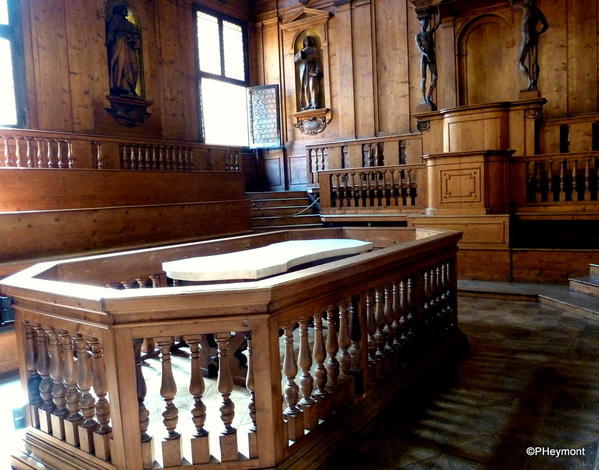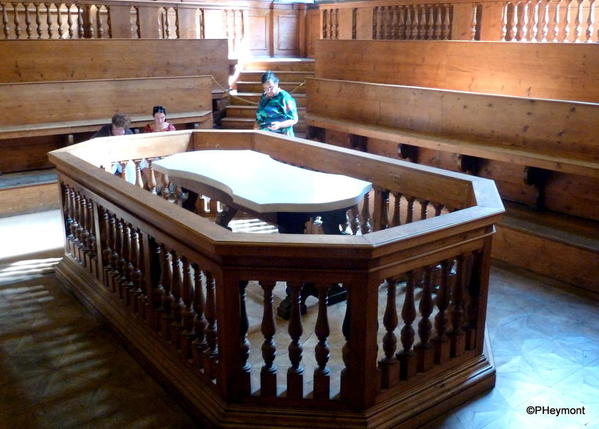The two very precise statues above serve a dual purpose, not only as decorative supports for the canopy above the anatomy professor's chair, but also as reference models for the students who came to Bologna to study, and witnessed dissections taking place on the white table in the center.
The models, called the Spellati, or 'skinned' in Italian, are the work of an 18th-century pioneer of medical modeling, Ercole Lelli, who usually worked in wax. The other statues, representing famous physicians of ancient times, are by Silvestro Giannotti.
Bologna's university, the first to call itself that and likely the oldest in the world (it claims 1088 and has a charter from 1158), can also claim the first formal medical faculty (about 1200 AD) and was the first school authorized to dissect human bodies for study (1311).
So it's not surprising that when the University moved into its first purpose-built center in the early 1600s, it included this 'anatomical theatre' where students watched from the bleachers while staff performed dissections under the direction of the professor in the chair.
Much of the theatre was destroyed by a World War II bomb, but was rebuilt, using all the recovered parts. Oddly, none of the reference I've searched, in English or Italian, indicates when it was last used for active teaching.





Comments (0)